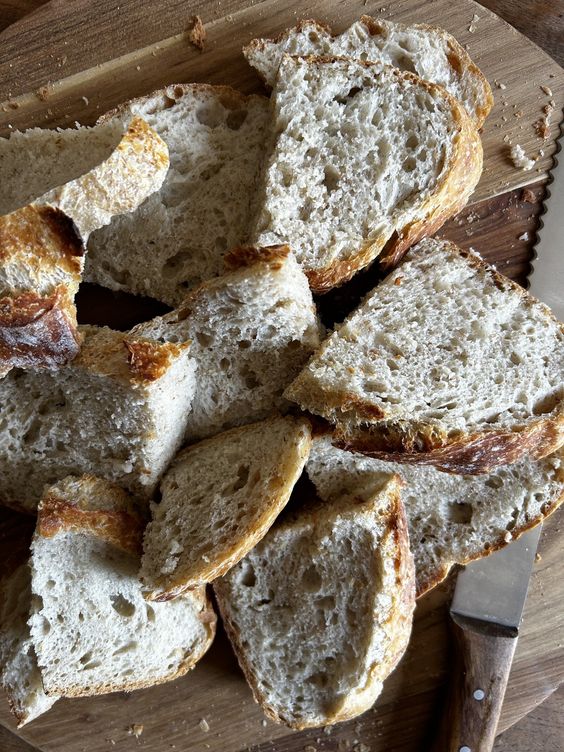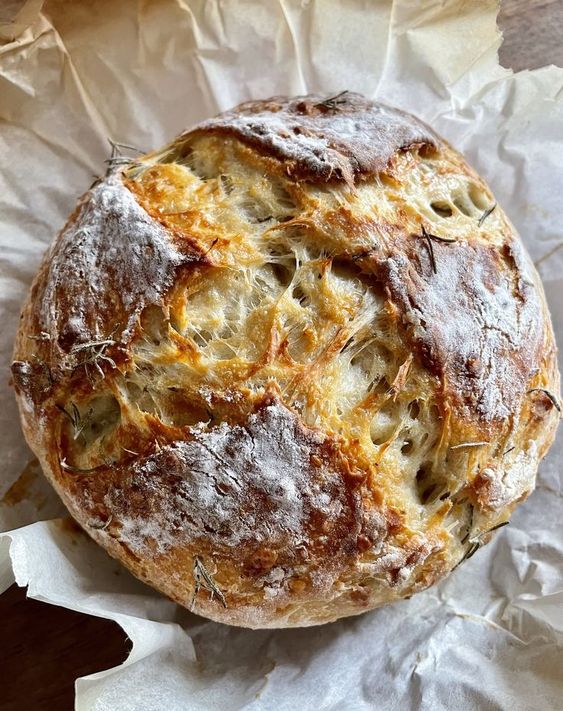This easy no-knead sweet potato sage artisan bread is incredibly soft and flavorful, boasting a tender crumb. It’s delightful served warm with a generous drizzle of high-quality olive oil or toasted with plenty of melting butter!
Have you ever baked bread using potato? The sweet potato in this recipe lends a moist, almost fluffy texture, creating a richer, heartier loaf. The best part? Like my other no-knead artisan bread recipes, this one is a breeze to make, requiring only 20 minutes of hands-on prep time!

EQUIPMENT
- Digital scale
- Whisk
- Spatula
- 4 Qt mixing bowl
- Dough scraper
- Parchment paper
- 3 Qt Dutch oven
INGREDIENTS
- 1¼ cups room temperature water (about 70°F/21°C)
- 1¼ teaspoons active dry yeast
- 3 cups bread or all-purpose flour, plus extra for dusting
- 1½ tablespoons fresh sage leaves, finely chopped
- 1 teaspoon kosher salt
- 1 cup mashed sweet potato (about 200 g), cooled (see notes)
- 1 tablespoon extra-virgin olive oil
INSTRUCTIONS
- Add the yeast to the room temperature water and let it sit for 10-15 minutes until foamy.
- In a large mixing bowl, whisk together the flour, sage, and salt. Add the mashed sweet potato, mixing until well combined and breaking it up with a fork if necessary.
- Pour the yeast mixture and olive oil into the bowl, and use a rubber spatula to mix everything together until fully incorporated. The dough will be sticky and stringy, with some flour still visible around the edges.
- Cover the bowl and let the dough rise in a warm place (see notes) until it doubles in size, approximately 8-10 hours.
- Once the dough has risen, turn it out onto a floured surface using your hands or a dough scraper. With floured hands, gently fold the dough into itself several times to form a soft, flour-dusted ball. Place the dough seam side up in a flour-dusted proofing bowl. Dust the top with flour, cover, and refrigerate for at least 1 hour or up to 24 hours. If needed, it can also be left for as long as 48 hours at this stage.
- When you’re ready to bake, preheat the oven to 450°F (232°C) with the Dutch oven or covered baking vessel inside.
- Remove the cover and invert the proofing bowl to turn the dough out onto parchment paper seam side down. If necessary, gently shape the dough into a loaf with your hands. Score the top with a razor blade or a sharp knife, creating a design of your choice to allow steam to escape while baking.
- Once the oven is preheated, carefully remove the Dutch oven and transfer the dough (still on the parchment) into it. Cover and bake for 30 minutes, then uncover and bake for an additional 15-20 minutes. The bread is done when the top is golden brown and sounds hollow when tapped.
- Using the edges of the parchment paper, lift the bread out of the Dutch oven and transfer it to a wire cooling rack. Let it cool for up to an hour before slicing.
NOTES
- Sweet Potato: To prepare mashed sweet potato, wash the sweet potato(es), prick them with a fork several times, and bake at 425°F (218°C) for 30 to 40 minutes, or until easily pierced with a fork. Alternatively, steam sweet potatoes in the microwave for 4-5 minutes, checking for doneness and continuing in 30-second increments as needed. Let cool, then peel and mash before adding to the recipe.
- Seasoning: If you don’t have sage, consider using rosemary or thyme as alternatives. Ground cinnamon can also be substituted for sage for a sweeter loaf. Dried herbs can be used if fresh ones are unavailable.
- Rise Time and Temperature: Ideally, the dough should rise in an ambient temperature of 70°F-75°F (20°C-23°C), though temperatures in the high 60s (18°C-19°C) will also work if kept draft-free. Rise times can vary based on temperature, environment, and ingredients. The dough is ready to bake when it has doubled in size, which may take anywhere from 2-3 hours to a full day. Experiment to find what works best for you.
- Storage: This loaf can be stored in the refrigerator for 2-3 days or sliced and frozen in a well-sealed plastic bag for up to 1 month.







